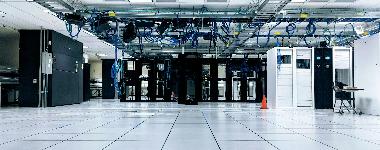The bitcoin mining landscape is full of anecdotes, best practices, and old wives' tales about the ideal conditions for operating ASIC miners. The discussion is only now beginning to expand to environmental factors, contracting, and alternative cooling mechanisms. New market entrants like MicroBT's Whatsminers and their various M30S ASIC models are often seen as excellent hardware but are comparatively understudied relative to their competitors. In this article, we review empirical data generated via API queries across multiple Whatsminer M30S models to begin answering the broader question: "How do I make intelligent decisions around self-mining and/or hosting my machines?"
This data should be viewed as the start of a conversation around ASIC optimization rather than a set of hard and fast rules for operating machines or facilities.
Distributed Hash is dedicated to studying the mining ecosystem and producing content that empowers miners of all sizes and experience levels. For project consultation, hosting, or general inquiries, please email hosting@distributedha.sh.
The data was collected in a dry, Western environment at an altitude of over 4,000 feet, but below the manufacturer-recommended maximum operating altitude of 6,561 feet (2,000 meters) for most new-generation miners. Data was collected via API query in a single air-cooled datacenter across multiple weeks. Temperature conditions varied between a high of 94.3°F (34.62°C) midday and 41.2°F (5.1°C) in the evenings. Precipitation was 0.22 inches over the period of data collection, with humidity ranging from 15% to 93% (average 49%).
Bitcoin miners often consider kWh as the golden metric. However, cheap energy is only beneficial when 100% machine uptime is assumed. For miners hosting with third parties or who have signed power purchasing agreements with mandatory minimums or fixed consumption agreements, these contracts are only cost-optimized when uptime is near maximized.
Focusing solely on kWh when mining or hosting is both naive and financially risky. Imagine hosting a new-generation miner for an agreed-upon 6.5c/kW. Your bill starts at $154 per month, plus additional fees that can push it closer to $200 per month per miner, resulting in an effective rate of 8.6c/kW. However, that’s not all that influences your effective kWh rate. The overall uptime of your machine or facility and the way those terms are contracted become significant factors in profitability.
If you're contracted to pay a fixed $200 per month per machine and a heatwave causes a 50% downtime, your effective cost of sats production doubles to over 17c/kW. Environmental conditions, grid-level supply issues, and geopolitical upheaval can also impact even the most optimal contracts for cheap kWh, leading to substantial financial losses.
Ambient heat poses a significant challenge to current air-cooled ASICs. Geography, altitude, humidity, and temperature should be considered when choosing which machines to purchase and operate. We examined various Whatsminer M30S ASICs (M30S 86T, M30S 92T, M30S+ 102T, and M30S++ 106T) to determine which machines are optimal in high-heat environments.
The data shows a sine wave pattern reflecting midday heat and night-time coolness, with significant machine-reported environmental temperature variability. A series of hot days pose the most serious risk to miner operation, as machines will reset or switch to idle during peak heat hours until ambient temperatures cool sufficiently.
Whatsminer machines can toggle between "low," "normal," and "high" power modes. Running machines in "normal" mode is standard, but during high heat, switching to "low" mode adds an ambient temperature buffer to the hash boards. Data over five days shows that switching from "normal" to "low" mode eliminates machine overheating during peak temperature days, though it impacts hash power and efficiency.
The highest-powered new-generation machines, such as the M30S++ series, remain stable across modes, while lower-end machines like the M30S 92T show significant efficiency gains in "low" mode. This suggests that mode switching should be considered during competitive markets or high ambient temperatures to optimize efficiency. Differences in efficiency across models likely stem from chip manufacturing processes, an area worth future study.
Miners must also consider when to switch modes based on bitcoin prices and operating kWh conditions to maximize efficiency. A comprehensive model can help determine the optimal operating mode for various price points and electrical costs.
We began by examining the risks associated with using kWh as a single metric for operating ASICs. It's important to consider contract terms with utilities or hosting entities, as well as political and geographical risks. No hard and fast rules exist for operating miners in specific locations, but considering these factors will aid in better decision-making.
Datacenter-level figures showed how ambient temperature variations and midday heat impact miner downtime. Running machines in "low" mode mitigates this threat, with an in-depth analysis revealing efficiency gains and nominal terahash losses across different Whatsminer models.
The highest-tier Whatsminer M30S++ machines demonstrate stable operation across modes, while the M30S 92T shows the highest efficiency gain in "low" mode. A comprehensive table of efficiency per machine across various prices and bitcoin prices can help miners decide when to change operating modes.
This data and discussion aim to help miners strategize around their operations, whether they're backyard miners or clients of hosting facilities. The more information miners have about their operating conditions, the better they can navigate market conditions and advocate for themselves.
Knowledge is power.










